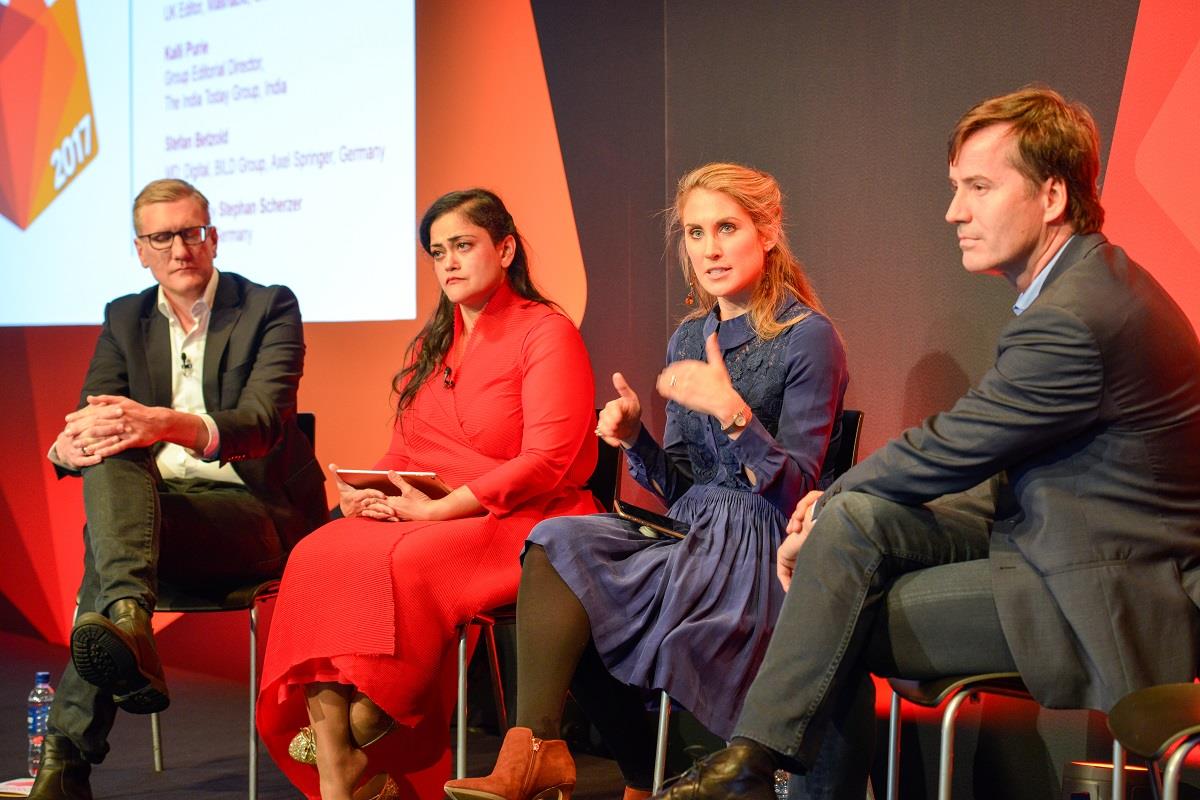Why content should be created specific to each platform

The rapid increase in content distribution platforms has led to major changes in the way publishers create content and engage with audiences. Industry experts sat down at the recent FIPP World Congress in London to share their experiences in how they are making sense of building audience relationships in this platform-rich age.
Interviewed by Stephan Scherzer, CEO of VDZ in Germany, Anne-Marie Tomchak, editor of Mashable in the UK, Kalli Purie, group editorial director at the India Today Group in India, and Lars Moll, general manager: product management at BILD Group, Axel Springer in Germany agreed that the nature in which publishers gather and distribute news have changed dramatically in the past five years. This has brought with it major challenges but also opportunities if publishers manage their content and brand image correctly across these growing platforms.
According to Purie the reality of day-to-day publishing at India Today is that they need to be platform agnostic to ensure that their content is available on “every possible available platform and format that you can possibly be because you really do not know which one is going to (create the) click… You have to float with everyone”. This, however, she admitted, places massive strain on resources and is something more and more publishers are battling with.
At Mashable, a multi-platform source for tech, digital culture and entertainment content, Tomchak said they have started to overcome this perplexity by trying to understand on which platform you need to best focus your energy and resources. “Before you can do this, you first need to know your audience and what their needs are.”
Admitting that Mashable explores as many platforms as possible to increase content discovery and distribution, she warned that your offering on each platform should be specific to that platform as well as different from your opposition. She referenced Mashable’s content on Snapchat Discover, which is unique to their brand. “You need an intimate knowledge of what actually works with the type of content you produce for that audience.”

Referring the current trend to pivot towards video, she also warned against starting projects merely for the sake of it. “Yes, video is important and a good way to build ad revenue but be selective. Produce good quality video and be strategic about it, (and know) how you reach your audience and make money from it. Otherwise it’s a complete waste of time and only adding to more noise.”
From his experience with developing multi-platform content at BILD, Moll agreed. “You don’t have to jump on every train but you do need to target the content for the platforms that you are on.”
At BILD, however, they have 20 million unique users, which constitutes half of the online population in Germany and this necessitates having to be on as many platforms as possible. “Our strategy is simple: be on every platform where a user can be.” At the moment it is so diverse, admitted Moll, that they are even creating audio content for Amazon Echo even if there is no business case to be made out for its profitability. “Our opinion is that we test and learn to understand the platforms.” The be successful they build separate (editorial) teams for each platform.
Despite having to ensure that content is created individually and specific to each platform, he warned that audiences must be able to recognise your brand no matter where it is being consumed. In BILD’s case it’s ensured by the use of logos and brand specific writing styles. It not easy and labour intensive, he said. Take video as an example. They shoot different videos formats for each channel, meaning that they need to create up to six videos “because we never publish the same video across channels”.
At India Today, said Purie, they learnt at an early stage that their initial plan – adopted by most publishers – to take existing content and adapt if for platforms simply did not work. “What we have found is that (when) you create original content for each platform it works much much better for engagment.”
Tomchak said this process of originality should go even further. At Mashable it starts at the concept stage with the selection of stories for each platform. The themes and origin of content creation differs from platform to platform. As one example she described how the content they create for Snapchat Discover was “iPhone heavy”, meaning that the content is tech focussed, while content they create for YouTube is focussed on entertainment. But to maintain brand awareness the tone across all platforms remains progressive, young, millennial and intelligent.
You can see the session video <a href="” target=”_blank” tabindex=”-1″>here.
More like this
Download the FIPP World Congress 2017 speaker presentations
Monetising video: a work in progress
Proof that magazine media still deliver the best results for advertisers
[Video] New FIPP Chairman on industry challenges, opportunities ahead









